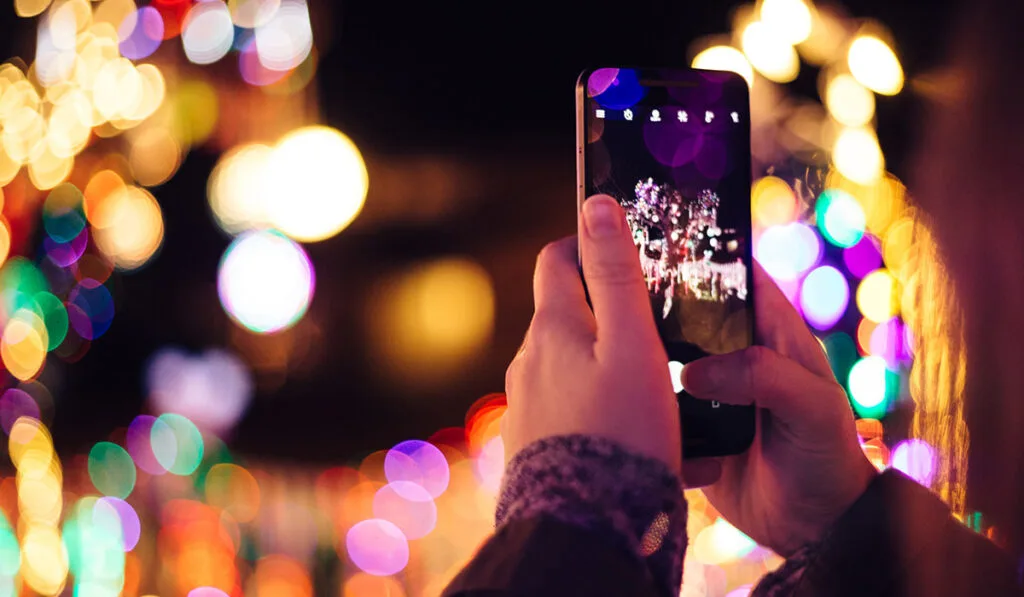In an age of cyber crimes and stalking, there’s no such thing as being too careful with your private information. One safety measure you can take if you’re trying to protect yourself as much as possible is to prevent your iPhone from saving the location of the photos you take — a feature also known as geotagging.
To disable photo geotagging on iPhone, go to Settings > Privacy > Location Services > Camera > and under ‘Allow Location Access,’ select ‘Never.’ Now your camera app won’t have access to your location and won’t save sensitive data regarding where you’ve been on each photo you take.
Let’s go through everything you need to know about photo geotagging, including why you may want to disable the feature.
How Do You Turn Off Geotagging on iPhone Photos?

Here’s how to turn off geotagging on iPhone photos:
- Go to ‘Settings.’
- Select ‘Privacy & Security.’
- Scroll down to ‘Location Services.’
- Tap ‘Camera.’
- Under ‘Allow Location Access,’ select ‘Never.‘
If you have other camera apps on your phone, you’ll also need to disable location access in the apps.
What Is Geotagging Exactly?
Geotagging is a feature that allows your iPad or iPhone camera to record and share the location of a photo and other metadata known as Exchangeable Image File Format (EXIF). EXIF includes details about how, where, and when a photo was captured.
If you share geotagged photos online, people can track you to a certain location. It also allows you to sort out your photos according to their location.
Why Should You Turn Off Geotagging?

Location data is sensitive information that you may not want to share with the public. When you enable geotagging, anyone who sees the photo can track and trace you to a specific location.
Of course, this isn’t usually a problem when posting a photo from your last vacation or a meal at a restaurant. However, pictures with private information, such as the location of your home, may expose you to robbery and other sorts of danger.
Geotagging is an important feature for branding and marketing purposes. It’s also an excellent tool to remind you where you took old photos. But it can be a bad idea if you are posting your photos online, especially when they contain private information.
How Do You Remove Geotags From Old Photos?
The above method only applies to photos you plan to take in the future; it won’t remove geotags from your old photos. You’ll need photo privacy apps if you want to remove location tags from your old photos.
A few great options for this include Pixelgarde, deGeo, Metapho, Halide Mark II, ViewExif, and The Photo Investigator.
Only iPadOS 15 and iOS 15 allow you to remove geotags from old photos. To do so:
- Open the Photos App.
- Select any photo that you wish to remove the geotag.
- Tap the ⓘ icon at the bottom of the screen.
- It will open a map. Tap it to expand.
- Next, select ‘Edit‘ at the top right. This will show you the location data of the photo.
- Tap ‘Remove.‘
Pros and Cons of Photo Geotagging
Geotagging isn’t all bad. It’s an incredible technology that people tend to misunderstand and misuse. Here are the two sides of photo geotagging:
Pros of Geotagging
- Photo geotagging can be a useful tool for disaster recovery groups. It helps people locate and find those who are lost or in danger.
- Sharing your location with friends will help you meet up at festivals and concerts. It also informs them of your whereabouts.
- Geotagging is a great memory keeper. It will help document your holidays and vacation and sort out your photos.
Cons of Geotagging
- Thieves and burglars may use your private information to break into your home.
- It exposes you to stalkers who may use your private information to harm you.
The Final Word
That’s pretty much everything you need to know about photo geotagging on iPhones. The next time you want to take a picture, pause and check your geotagging settings before proceeding.
After all, you don’t want to advertise your private location to everyone. But when used correctly, geotagging can be a lifesaver.
